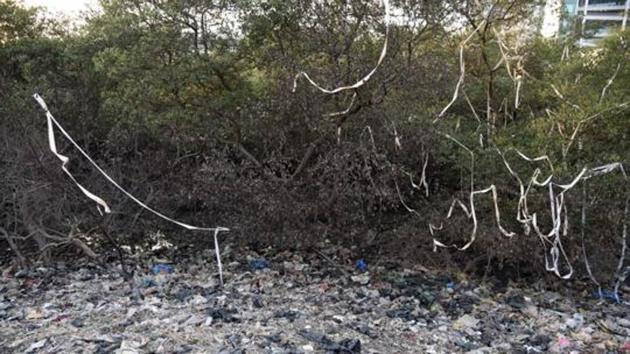Mumbai should ban open burning of garbage
After Delhi’s air quality in Diwali reached levels that required emergency interventions, the city started enforcing a rarely-used order from the National Green Tribunal that makes burning of garbage in the open an offence punishable with a fine. Last week, factories in the city’s outskirts were forced to shut down after it was found that the industrial units were resorting to open burning of waste.
After Delhi’s air quality in Diwali reached levels that required emergency interventions, the city started enforcing a rarely-used order from the National Green Tribunal that makes burning of garbage in the open an offence punishable with a fine. Last week, factories in the city’s outskirts were forced to shut down after it was found that the industrial units were resorting to open burning of waste.

Delhi produces around 10,000 metric tonnes of garbage daily – as much as Mumbai – and like Mumbai, the waste has to go to brimming landfills. In areas where the municipal trash collection is inefficient, citizens resort to burning trash, worsening air quality.
Mumbai should ban the open burning of garbage, too. According to a study by National Environment Engineering Research Institute (NEERI), which was reported by this newspaper, open burning contributes the largest amount (30%) of particulate matter (PM10) - small pollutant particles less than 10 microns in size that can easily enter the respiratory system causing health ailments. Bakeries that use wood, charcoal and other polluting fuels contribute 16% of PM10 emissions, the study said. This means that burning of trash and polluting fuel contributes nearly half of the PM10 in the city Apart from particulate matter, garbage burning releases lead, mercury and dioxins – compounds that can be passed along the food chain - into the air.
Despite the alarming statistics, the Brihanmumbai Municipal Corporation and pollution monitoring agencies have ignored open burning of garbage. Last week, residents of Mahim complained about burning of discarded plastic and electronic waste along the Mahim-Sion Link Road. Waste recyclers have been burning trash at this site for decades, but pollution monitoring agencies have been unable to stop it. There have been complaints that garbage heaps along Link Road in Malad are regularly set on fire because the municipal corporation does not pick up the trash. The railways, which have no organised way of disposing of its garbage, allow its staff burns trash near railway stations. Waste in municipal gardens is burnt in the premises.
Cities in the developed world have been burning waste, though this is not open burning and the process is done under controlled conditions. A more recent modification of this process has been the ‘waste-to-energy’ plants that use heat from burning thrash to generate electricity. Mumbai also plans to build such a plant at its biggest dumping ground at Deonar.
Environmentalists have found even this process unsafe. A study by the New York Department of Environmental Conservation found that even when waste is burned in controlled conditions, the mercury, lead and cadmium emissions are higher than the emissions from coal-burning electricity plants. A study by a group of institutes, including MIT, United States, said burning PVC (polyvinyl chloride) wastes in Mexico City, one of the largest urban agglomerations in the world, was one of the biggest sources of particulate chloride in the atmosphere. The study also said that garbage burning is an important source of PM2.5 which is deadlier than PM10. A study by Tata Energy Research Institute (TERI) said that fires at garbage dumps are a significant contributor to PM2.5 in winter season in Delhi. Studies have shown that the air around areas where waste is burned has higher levels of particulate matter, carbon monoxide (CO) and methane than recommended standards.
Mumbai is familiar with the consequences of garbage burning. A five-day long episode of fire at the Deonar garbage dump, in January 2016, took air quality to levels classified as ‘very poor’ by System of Air Quality Weather Forecasting and Research (SAFAR). In 1996, following a public interest litigation filed by residents of localities around the Deonar dump, the Bombay high court, with the help of experts, suggested a list of steps that the municipal corporation needs to take to control the fires. More than 22 years later, most of the remedial measures are still to be implemented.
.

Stay updated with all the Breaking News and Latest News from Mumbai. Click here for comprehensive coverage of top Cities including Bengaluru, Delhi, Hyderabad, and more across India along with Stay informed on the latest happenings in World News.
Stay updated with all the Breaking News and Latest News from Mumbai. Click here for comprehensive coverage of top Cities including Bengaluru, Delhi, Hyderabad, and more across India along with Stay informed on the latest happenings in World News.





